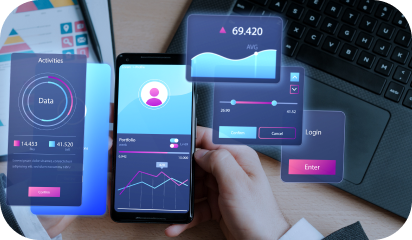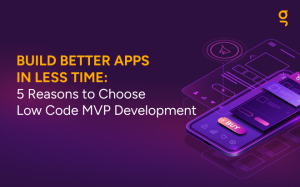Modern technology has two problems: Devices have too many integrated features and everything is smaller.
A good implementation of more-than-what’s-necessary features can give some users an all-in-one experience. While a bad implementation can make it a nightmare to use for an often ignored demographic which is older adults.
Who exactly are these older adults:
Older adults are users aged 50 years and above. The learning curve isn’t that smooth for this demographic as compared to millennials or Gen Z.
UI that has too much going on with it often confuses older adults and they tend to blame themselves for not being able to use technology rather than the design.
But, one can’t put their lives on hold just because of their age. It’s simply a question of need. If they can go to YouTube and learn how to make a cake then they can also learn how to get a cab with Uber.
Infact, generational stereotypes are getting out of the way while building app interfaces for this demographic. As this cohort is not so far behind when it comes to using Facebook, Uber, WhatsApp or YouTube.
Myth #1 Targeting old users deemed as being the last Internet frontier

Attracting older adults as part of the user-base was considered to be a niche market. Maybe ageing adults aren’t the target of Silicon Valley’s latest service or dating apps but startups believe there is value in addressing the elderly’s needs.
San Francisco-based company Honor (custom home care for seniors) has recently closed a Series C round. It has raised a total of $115 million in funding in just four years.
Myth #2 Elderly do not want to use modern technology at all

It’s not like they don’t understand technology and associated benefits. They want to use the tech but it’s targeted towards and tailored for younger audience. Besides older people are the ones who face trouble getting in a car and driving to get groceries or medical supplies. They need these apps as much as any other group of people.
Martin Gerstell, 94, volunteered at the National Gallery in Washington last month, used the Uber app his granddaughter installed on his iPhone.
Why should older adults matter to designers?

From getting into the swing of mobile phones and computers to watching monologues of the late night show on YouTube or owning a fitness tracker, for decades people aged 50+ have used digital technology in one way or another.
- Almost 70% of old people all over the world today have some sort of internet exposure on a daily basis.
- According to the census report, by 2030, about 20% of the U.S. will be old.
The number of older netizens using smartphones is significantly more than ever but contemporary digital products continue to ignore and fail this demographic.
As Don Norman observed, bad design abounds, in both digital and physical products. Current interaction designs often feature startling sounds, tiny targets, illegible text, and other features that make the online world unfriendly to older users.
Good design for older adults is often recognized as good design for everyone
It’s worth giving a thought that when you’re designing for maximum accessibility you’re automatically designing something that is engaging and easier to use. Design guidelines below are consistent with the principles of Universal Design in most of the big enterprises.
- Distinguish the primary buttons from their surrounding UI elements by proper pairing of color, contrast, layering, shadow and highlights.
- A simple navigation is essential to allow users to easily and quickly get from point A to point B. Flexible patterns like grids, minimizing sublevel, keeping menus in a single function, etc. are among today’s best navigation practices.
- Button and text sizes should be kept scaled up. Like keeping icons labeled with bigger text whenever possible or preferring Sans serif typefaces for on-screen readability.
Feeling bogged down while designing an ideal interface for this ‘optimistic’ crowd? Start a project with us for creating an inclusive experience that’s unique and accessible at the same time.

